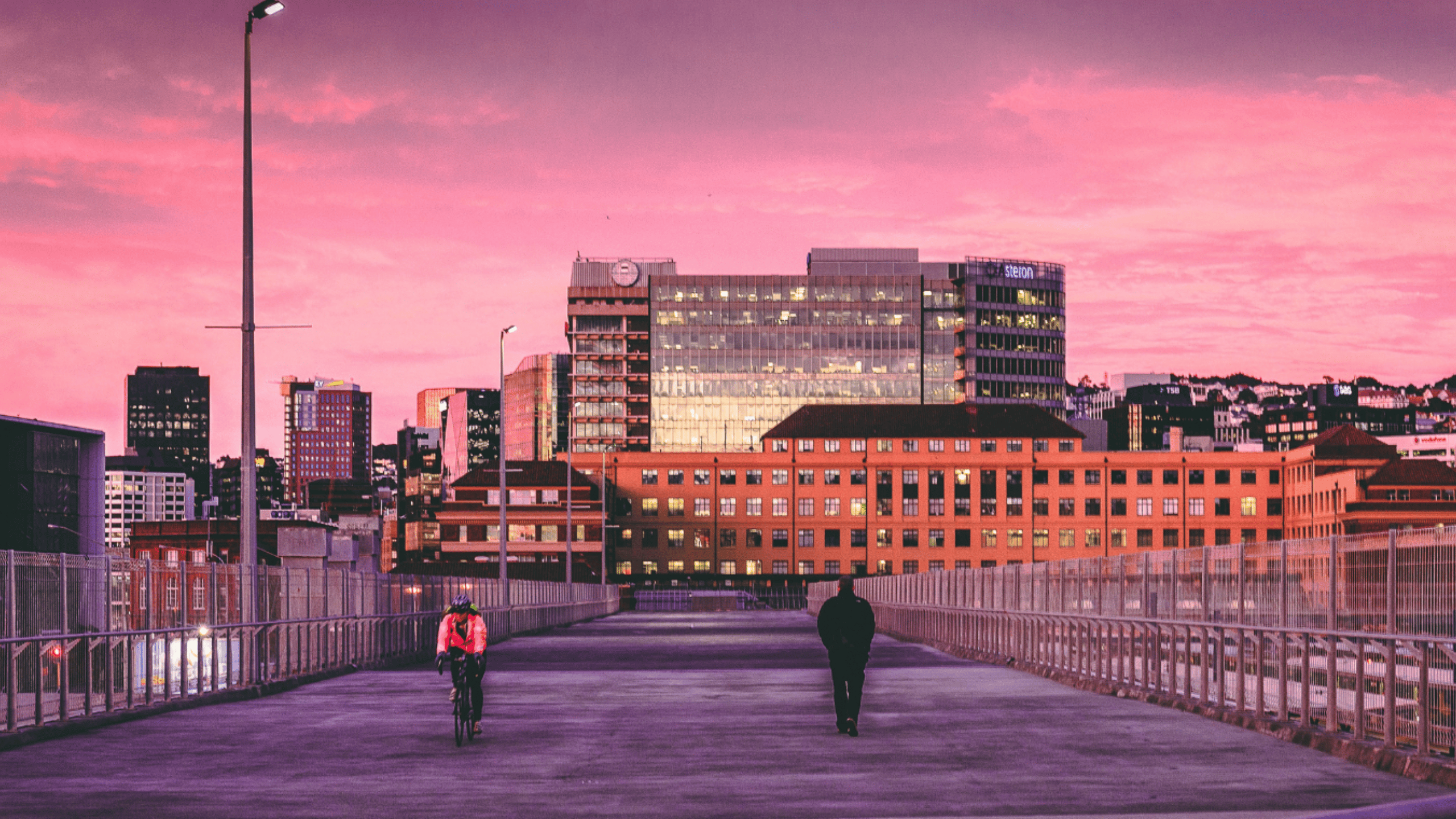Property Council’s Wellington Regional Committee member and former Chair, Paul Robinson of The Woolstore Management Ltd shares his view on the economic, social, and environmental wellbeing of Wellington.
In recent months there has been an endless flow of data relating to our economic, social, and environmental wellbeing. Some of it resides in my brain for an hour, some for a day, and some gets stuck in my brain, much in the way that those forestry logs have got stuck between the piles of the Te Tairawhiti bridges during Cyclone Hale. The data that is stuck in the piles of my brain, seems to mostly relate to Wellington City and none of it is pretty – in fact, reader discretion is advised before proceeding further.
I have been trying to make sense of this data. In order to do so, I’ve done a couple of things – firstly I have divided it into input and output/outcome data. Then I have asked myself whether this data has a material impact on things, and if so, what are the correlations between that data and the other data in the list.
Sit Down!
This is the input data:
- As at September 2022, physical office occupancy in New York City was 47% 1. I don’t know what the equivalent data is for Wellington City – so I am using the New York data as a proxy for Wellington.
- Wellington City Council are removing 1200 of the 2300 metered car parks in the city as well as several un-metered parks.
- The two key occupancy costs (i.e. Rates and Insurance) for the building I work in total $500k p.a. Rates are $250k p.a, Insurance costs are $250k p.a. For a building of similar value in Mt Eden, Auckland, rates would be $85k p.a and the insurance premium would be $30k. i.e The two key occupancy costs combined are 4.3 times greater than in Auckland. What are the consequences of this competitive disadvantage?
- The interest rate charged on the loan that my company has with the bank in December 2022 is exactly double what is was 12 months beforehand.
- I have no data that indicates the amount of money that businesses and public authorities need to spend on climate change measures. I assume it will be similar to the amount required to make Wellington seismically resilient. I would hazard a guess that the sum required would be about 20% of our collective balance sheets.
Here is the output/outcome data:
- The value of commercial real estate in New York City dropped by 45% in 2020 (and you were worried about your crypto investments???). Could this happen in Wellington? If so, that would mean about $20 billion wiped off Wellington’s public and private balance sheets. You don’t think that can happen here? Well, it did 30 odd years ago when we allowed things to get badly “out of whack”.
- Porirua’s economy grew by 4.3% in the year to September 2022 compared to 0.4% for Wellington City 2 (why does growth start and stop at the north end of Main Road Tawa?).
- Public Satisfaction with Wellington City Council’s decision-making process has dropped from 30% in 2020 to 12% in 2022.
The above is all a bit grim – but let’s not throw our hands up in the air. There must be an answer – perhaps several answers..
Let’s start, by thinking about why Porirua would grow by 4.3% p.a. and Wellington City by 0.4%. It’s tempting to say, as the Infometrics Report that references this data suggests that this is down to working from home. I’m not so sure. I’d be interested to see some “goods and services” data.
Wellington is a service-based economy and Porirua, and Hutt Valley are goods-based economies. Is the goods economy growing but services stagnating? I’m not sure about that either. I think the low growth for Wellington is most strongly correlated to low satisfaction in WCC decision making. People are not as confident as they once were to make investment decisions in Wellington. Maybe it is best summed up this way – Wellington left a potential 4% growth on the table last year. The GDP for Wellington is circa $40b. It looks like we missed out on a couple of billions of dollars of growth – that’s a lot of money not available for health, education, environmental reform, and City enhancements.
Secondly, is there a correlation between Wellington’s growth and the disproportionately high costs of rates and insurance? I read somewhere the other day that Wellington’s average gross office rental is now $30p.s.m above Auckland (no reference I’m sorry). I don’t think we can calculate the economic correlations between any of the input and output data discussed here, but common sense would suggest that the imbalance between Wellington and Auckland operating costs must be negatively impacting Wellington’s long-term growth.
The risk heading forward is that we don’t manage these issues, or if we do, we attempt to manage them individually rather than collectively.
If we don’t manage these issues – we won’t be in a position to deal with the elephant in the room, which is, of course, climate change.
Shortly before the pandemic, I attended the Property Council New Zealand Green Property Summit in Auckland. There were two excellent addresses that I thought laid down principles that will help us deal with this negative data in a positive way and allow us to move to a more sustainable future.
The first was by Climate Minster Shaw. He stressed the importance of “bringing everybody along” on the climate change journey. That is not happening in Wellington City at the moment. I think it is because the residents and businesses have become largely disenfranchised.
There are two reasons behind this.
Firstly, you have a cohort of businesses and commercial property owners who provide 40% of the cities rates take – but are not commensurately or adequately involved in the decision-making processes.
As a city we have demonstrated, with some rigour, that we can properly enfranchise mana whenua. Why don’t we demonstrate the same rigour in enfranchising the business community?
One way in which our sense of enfranchisement could be improved is for the City to develop a properly structured transition plan. We seem to be proceeding on a “lets pull every lever and see what happens” basis. In my view we won’t make much progress while this attitude prevails.
Secondly, I think funding from the super-ministries ( e.g Waka Kotahi and Kainga Ora) are distorting resource allocation.
If Waka Kotahi are funding 50% of a roading improvement but no central government agency is providing funding for, say, an underground pipe upgrade , then there is a risk that the “nice to have” roading project get preferred over the “essential” underground pipe upgrade. When an announcement is made to spend 2.4m on a bus shelter in Johnsonville – do we hold GWRC, WCC or Waka Kotahi to account. If the latter, how do we do that?
The second speaker at the Green Property Summit was the erudite economist, Shamubeel Eaqub. Shamubeel put forward the view that climate change issues will be resolved by business rather than policy makers or consumers. I didn’t understand what he was saying at the time, but it is becoming apparent to me now. Up until now, the business I am involved in has been undertaking climate change initiatives as and when our profit and loss account allows. If we are to make significant progress, however, we are going to have to use significant chunks of our balance sheet. That means our balance sheets must be in good order.
Working from home, unsustainably high rates and insurance costs, poor confidence in public decision making erode our balance sheets. We can’t change the world with weak balance sheets.
Paul Robinson
Executive Director | The Woolstore Management Ltd
Paul has been a valued contributor to Property Council’s advocacy and events workstreams for the better part of 20 years.
He was the longstanding Wellington Branch President and remains on the Wellington Regional Executive to this day.
Paul owns and manages The Woolstore Design Centre, a refurbished office and retail space located on Thorndon Quay in Wellington.
He is a vocal advocate for Wellington property issues and a champion of sustainability and resilience, particularly with regard to climate change.


